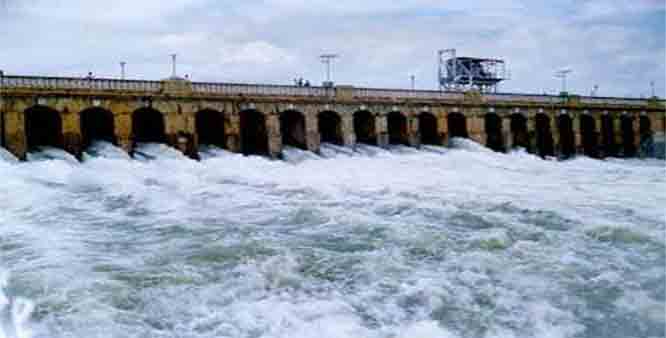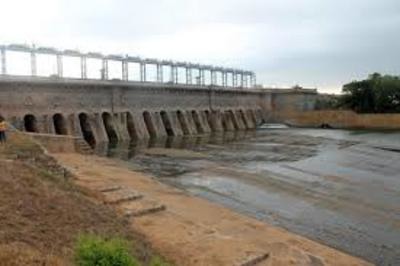SC’s sugar coated pill for century old Cauvery dispute
 M, CHENNA NAGRAJ
M, CHENNA NAGRAJ
NEW DELHI : The Supreme Court may have triggered a sense of joy among the farmers and political parties in Karnataka with its allocation of 14.75 TMCFT of additional water allocation and a sense of gloom in Tamil Nadu , but a detailed look into the issue indicates that both sides have no reason for their rejoice or despair.
The three member Supreme Court bench headed by Chief Justice of India Dipak Misra seem to have administered sugar coated a bitter medicine to end the century old malice involving two traditional riparian rivals — Karnataka and Tamil Nadu right from the British era. The colonial masters oversaw two agreements between Madras Presidency and the rulers of Mysore in 1914 and 1924.
The three member bench headed by Chief Justice of India Dipak Misra have ruled the 1924 water sharing Agreement between the Madras Presidency and the Suzerain State as ‘valid’ sidestepping the arguments that it was an agreement between two un-equals. The same Court had earlier held that the questioning the Agreements entered into by the States under the goading of the colonial masters as a ‘profound constitutional issue’. 
The court for the first time has taken into cognisance, of a UN assessment on the presence of 20 TMC of ground water in Cauvery delta region. Of this, SC equitably divided this ground water between Karnataka and TN. It allowed 4.75 TMCFT of water to drinking water needs of Bangalore which faced the prospect of being branded as water starved city like Cape Town where water rationing is under progress.
In Karnataka, where the elections are due in the next couple of months and the assembly has to be reconstitututed before May, leaders including chief Minister Siddaramaiah and other political parties have welcomed the additional allocations and are seeking to project themselves as saviors of the cause of Cauvery.
In Tamil Nadu, there has been a war of words between ruling AIADMK and opposition DMK for the loss from the state’s allocation. Chief Minister Palaniswmy and his deputy O Panneer Selvam however are at pains to highlight the success of state getting its major demand of setting up of water management board accepted by the apex court.
In effect both sides gained something and lost some thing. But loss of Karnataka is certainly greater since it will no longer be able to use its discretion for releasing water release to the lower riparian state.
The Court by terming river as the ‘national asset’ where no state could claim exclusive rights in an inter state water has sought to strike a balance in the perceptions prevailing in both the states. The states can only have the right to decide upon their share of waters and nothing else. Will this mean, the Union Government and the Water Resources Ministry will control the waters in the reservoirs in both states.
The judgment is valid for the next 15 years and the riparian states have an option of filing an appeal against this Order.The loss for Karnataka is going to prove very costly as it would be difficult for the political leaders convince the people at large when the state will no longer be calling the shots as far as the releases are concerned.
The three member Supreme Court bench headed by Chief Justice of India Dipak Misra seem to have administered sugar coated a bitter medicine to traditional riparian rivals Karnataka and Tamil Nadu.
For the first time, the court has taken into account, the assessment of the UN about the presence of 20 TMC of ground water in Cauvery delta region and allocated 10 TMCFT to Karnataka and allowed TN to extract 10 TMCFT of ground water. The SC accepted TN’s major demand for setting up river water board, thus conceding a major point of contention between the two rivals.
The allocations to two other contenders Kerala and Pondicherry by the CWDT remained unchanged.Treating a river as a national asset is a grand idea. However , not many in the country know that the financing of the projects in the Cauvery basin ever since the lapse of the 1924 agreement in 1974 has been entirely from the people of Karnataka as it did not receive even a single rupee from the Centre.
Such being the truth, how fair it would be to take over the basin which was had a stifled and debilitated growth during the colonial British rule that continued in Independent India. Now the SC wants to treat all rivers as national wealth holding the colonial legacy as ‘valid’.
The SC in its judgment has narrated how the world had changed from the 100 year old river sharing principle of’ Harmon Doctrine’ which allowed a country to have absolute sovereign right over the river course in its territory. However what is to be noted is that very few know the humiliating conditions and circumstances under which a Vassal State of Mysore was forced to store water in its Krishna Raja Sagar (KRS) dam when the very Hormon Doctrine was the order of the day.
After the Independence, the state was forced to accept the agreement of the unequals till Karnataka rebelled and went ahead with the projects without the Centre’s permissions. Although the apex court has spoken against the claims of the ‘prescriptive right. Over the waters based on 1924 agreement, it obviously has no solution to the humiliations suffered by the people of a state for 100 long years except to denouncing the demand.
What is in store for the disputed Cauvery valley is in the realm of possibilities, the SC judgment treating the inter-state rivers as ‘national assets’, it offers the polity of the country a challenge and and opportunity roll out a grand plans for the basin states and realize the economies of scale, the country offers.
Use of latest water technologies that are in vogue successfully in arid west Asian country like Israel, which has transformed its agricultural economy using every available drop of water. That country which faces existential crises amidst dogging social, religious and political problems all around. It has been able to transform itself as a water rich region over the years of successful roll out of its plans, proving to be an envying aspect even for the developed countries.
Such grand plans can be a reality if the Centre takes a lead and roll out the plan involving four riparian states ruled by different political parties. While this appears to be a too much of an ideal, miracles do happen, when they are least expected. The challenge if accepted in the right spirits, it would spell a major breakthrough in bring a second green revolution.
In an era where frequent elections are the order of the day, a scenario like this appears to be an elusive and a distant dream.

